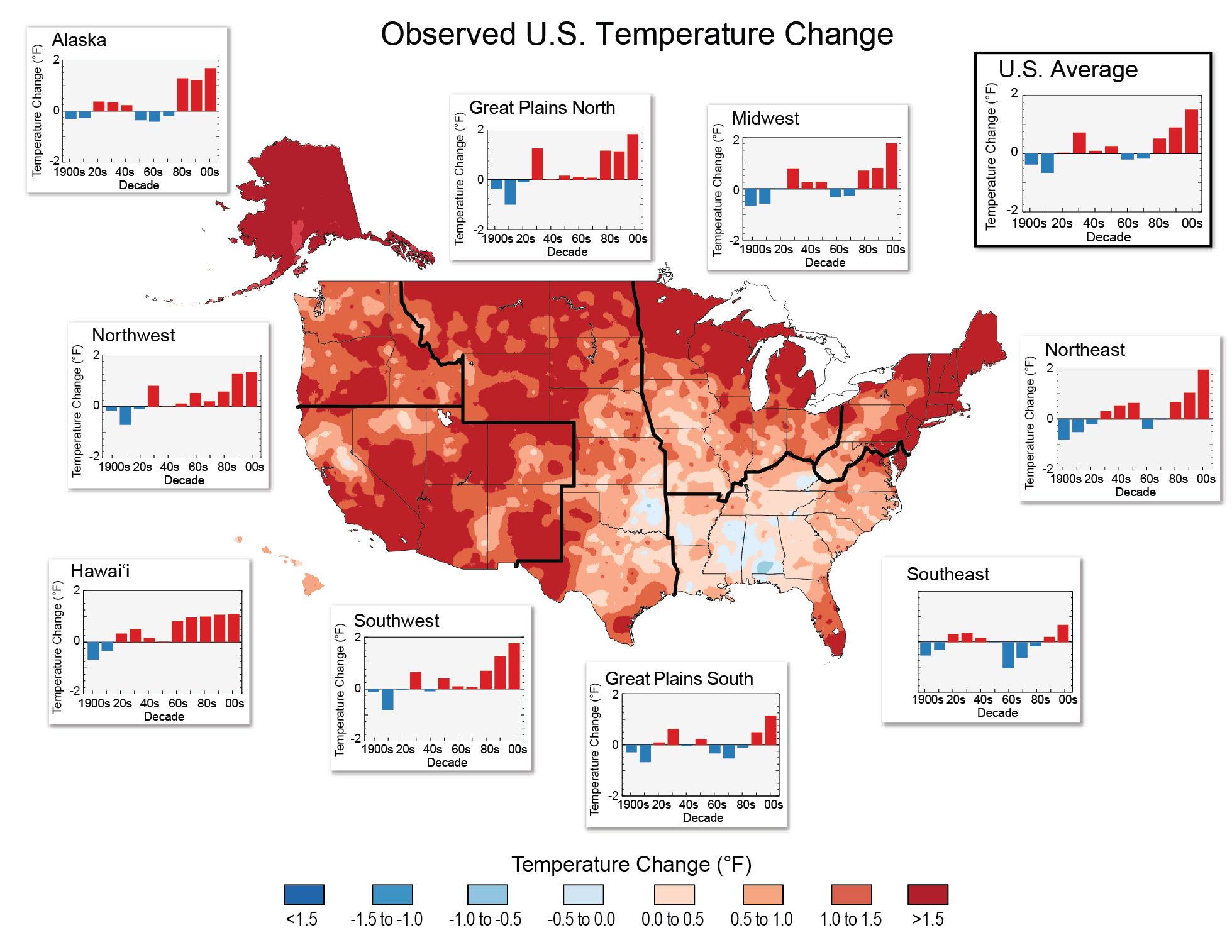FOX is the master of manipulated data. What you're seeing there is almost always misrepresented. It's their signature. "Oh, it got cold in the winter, so there's no global warming." They never get tired of that one.
On the other hand, the real map is the summary of climate change over decades. As you see, FOX's map was an attempt to hide the fact that the United States (like the rest of the world) has been warming at an increasing rate over the last few decades.
That's what it is an anomaly from a baseline. Global warming anomalies are set to be compared to a reference period. In this case,NASA's GISS data,it's the 1951-1980 period. It's in increments of 0.01 degrees Celsius. To get the change in degrees F, divide by 100 and multiply by 1.8. So last year, the anomaly was about 2 degrees above the reference period, which is a lot more than Edward Teller had predicted a half-century ago. Even then, he had realized that a few degrees would have catastrophic effects.
Depends on what kind of nitrogen compound. Nitrogen, being a gas, doesn't form deposits on sensors. However:
The acid rain scourge of the '70s and '80s that killed trees and fish and even dissolved parts of statues on Washington, D.C.'s National Mall is back. But unlike the first round, in which sulfur emissions from power plants mixed with rain to create sulfuric acid, the current problem stems primarily from nitrogen emissions mixed with rain to create nitric acid.
"Both are strong acids, and both create serious problems for the environment," says William Schlesinger, president of the Cary Institute for Ecosystem Studies in Millbrook, N.Y. Acid rain degrades cement and limestone as well as leaches critical soil nutrients, which injures plants. It also liberates toxic minerals from the ground that flow into stream runoff where they can kill fish.
Sulfur emissions from power plants were one of the primary motivations for the U.S.'s Clean Air Act Amendments of 1990, which set reduction targets for both sulfur dioxide (SO2) and nitrogen oxides (NOx). However, whereas sulfur dioxide emissions decreased almost 70 percent from 1990 to 2008, emissions of one NOx—nitrogen dioxide (NO2)—went down only 35 percent for that same period, and amendment targets have yet to be made, according to the U.S. Environmental Protection Agency (EPA). "This comes as scientists have grown increasingly aware of the consequences of the remaining nitric acid deposition," Schlesinger says.
Schlesinger is one of a number of scientists calling attention to the problem. On June 8 the Integrated Nitrogen Committee of the EPA's Science Advisory board held a public teleconference to discuss a draft report of possible solutions to nitrogen problems, including acid rain. A final report is pending.
https://www.scientificamerican.com/article/acid-rain-caused-by-nitrogen-emissions/
We can see it now. But there's hope. Controlling sulfur emissions greatly reduced the damage from acids based on sulfur. So it's likely that we can also control the damage from nitrogen-based acids.
No, I don't. Ignorance of basic science is rampant in the United States, partially because many school districts don't see it as important, and because politicians of all stripes lie about it.
And therein is the answer. People have convinced themselves that if they just deny a problem, they won't have to face the consequences of denial. What, if anything to do about these problems is a political issue, and entirely separate from the fact that we are creating them.
If that could be realized, we'd have made a huge advance.


